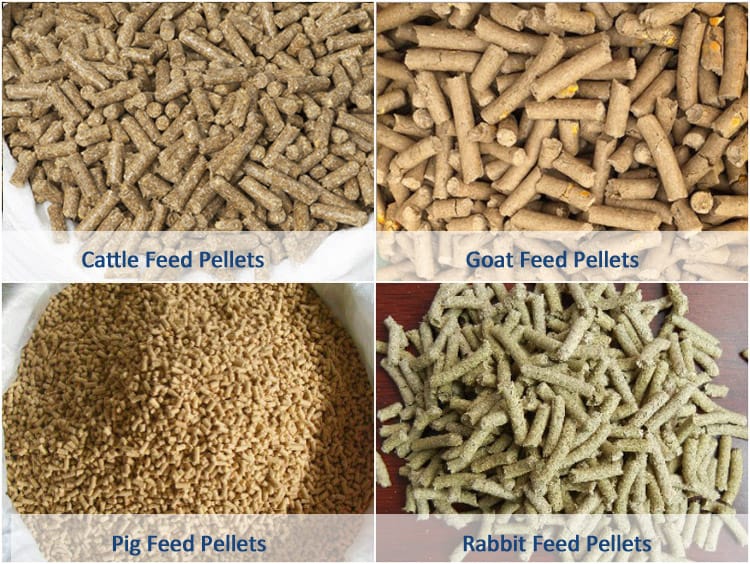Production technology of straw micro-storage feed
In recent years, due to the development of dairy cattle and shed-raising sheep and other breeding industries, straw micro-storage feed has been widely promoted and applied, and good economic and social benefits have been achieved. The operation technology of straw micro-storage feed is summarized as follows.
The straw micro-storage feed uses straw, corn straw, wheat straw, corn and other crop stalks as raw materials, and is added with a high-efficiency composite dry inoculant prepared by bioengineering technology by lignocellulosic bacteria and organic acid fermentation bacteria. In an anaerobic environment, it decomposes cellulose and lignin and converts them into sugars, which are converted into lactic acid and volatile fatty acids by organic acid fermentation bacteria, reducing the pH value to 4.5~5, and inhibiting butyric acid bacteria and spoilage bacteria. The reproduction of bacteria increases the crude protein content of crop stalks by more than 3 times. It has a sour fragrance and is fond of herbivorous livestock.

1. Build a cellar: Choose a place with high terrain, good drainage, close to the livestock house, and easy access to make the cellar. The bottom and surroundings of the cellar should be smooth and level, impervious to water, and the size depends on the amount of storage. The circular cellar is generally 2 cm in diameter and 3 meters in depth, and the rectangle is generally 2 meters in depth, 1.5 cm in width and 3 meters in length. According to 300 kg of dry straw or 500 kg of green straw per cubic meter, calculate the amount of grass stored in the cellar.
2. Straw processing: It is better to use fresh, clean and uncontaminated straws. For example, old straws must be used to remove mildew and spoiled parts. Cut the stalks short with a straw machine, cut them into 5~6 cm for cattle feeding and 2~3 cm for sheep feeding.
3. Resurrection bacteria: 3 grams of live dried bacteria for 1,000 kg of straw. Cut open the bacterial seed bag and pour the bacterial seed into 2 kg of water. After dissolving, place it at room temperature for 2 hours to revive the bacterial seed. If you add 2 grams of sugar to the water first, then add live dry bacteria after dissolution, the resurrection rate can be increased by 10 times. Then pour the resurrected fungus into a fully dissolved 1% salt solution (1200 kg water, 12 kg salt) and mix well. The resurrected inocula must be used up on the same day, and it is best to use it along with the preparation.

4. Cellar: The moisture content of the straw in the cellar should be 60%~70%. The inspection method is to grasp the straw with your hands. If the moisture in your hands is obvious and the water drops do not drip, it indicates that the moisture content is about 65%, which is just right. If the moisture content is too high or too low, you can add materials or water to adjust. First spread a layer of 20~30 cm thick straw on the bottom of the cellar, spray the prepared bacteria liquid on the straw evenly and compact it, pack the cellar in layers, install one layer, spray one layer, and remove the air between the straws. , Continue to work until the cellar is sealed 40 cm higher than the cellar mouth. In the case of micro-storage of wheat straw, adding cornmeal and bran at 0.5% of the weight of the straw will have a better effect.
5. Cellar sealing: cellar loading and cellar sealing must be completed at that time, otherwise it will affect the fermentation effect. The cellar is fully compacted when it is 40 cm higher than the cellar opening, and the top layer is sprinkled with 250 grams of salt per square meter, covered with plastic cloth, and covered with 20 cm thick straw or wood chips, and then covered with 30 cm thick soil and sealed tightly. After the cellar was sealed, the cracks were found to sink, fill it with mud in time, and dug drainage ditches around the cellar.
6. Opening the cellar: Generally, the cellar can be opened and used after being sealed for one month. The circular cellar is used layer by layer from top to bottom, and the rectangular cellar is opened section by section from one end. Seal the cellar tightly with plastic cloth to prevent secondary fermentation. High-quality micro-storage feed is golden yellow. If it is brown, black-green, or with a strong sour taste, it is sticky, indicating poor quality. If it smells of putrefaction or musty, do not feed it to livestock.
7. Feeding method: the feeding amount is from small to large, so that the livestock has an adaptation process, and gradually reaches the standard feeding amount in about 7 days. Salt is added to the micro-storage feed during production, and the amount of salt in the diet should be reduced to avoid salt poisoning.
【Related articles about cattle and sheep feed production】
1.How much is the investment for a small cattle farm in rural areas?
2.How to control cattle feed plant cost for cattle feed pellet production?
3.How much does it cost to process 1 ton capacity cattle pellet feed?
4.How do large ruminant animal feed mill factories control the quality of cattle feed pellet?
5.Business proposal for annual production of 40,000 tons cattle and pig feed processing plant
If you want to built one complete pellet production line in your country, pls send the inquiry to us. We will customized design according to your requirement.



